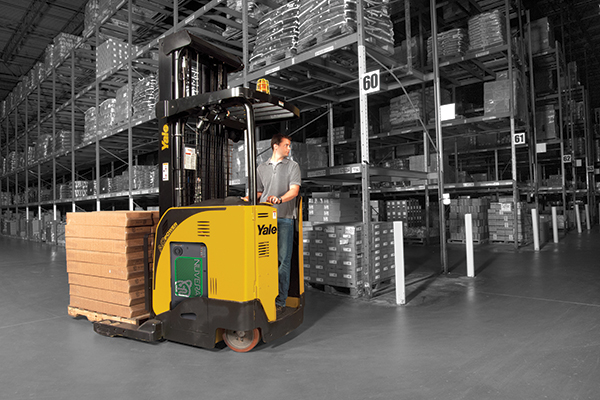Lift Truck Tips: The balance of power
The right tools and practices can ensure a fleet is efficiently consuming power instead of recklessly eating into profits.
The Great Recession, the doubling of lead-acid battery prices and the Amazon Effect are just a few factors driving the lift truck market’s efforts to trim waste. Not surprisingly, the lift truck’s diet—its pattern of power consumption and related costs—is key to getting fleets in shape.
Battery inventory and fuel costs came under the microscope while lithium-ion and hydrogen fuel cell options hit the market as viable alternatives. At the same time, telematics and fleet management empowered managers with data and tools to capture costs and prove value.
Kevin Paramore, sales and marketing manager for motive power and telematics at Yale Materials Handling Corp., remembers the way things were years ago at his previous employer.
“We played the musical truck game,” Paramore recalls. “One third of the fleet charging, one third cooling, and one third utilized. We had too many trucks.”
Fleets with too many batteries—at least three for every truck—were just as common. As managers explored opportunity charging or fast-charging technologies to bring the battery-to-truck ratio closer to 1:1, the margin for error grew smaller while the penalties grew bigger.
“Before making any changes, it’s important to take a step back and make sure you are using the motive power source that gives you the biggest bang for the buck,” Paramore says. “No matter how happy you are with what you have, make sure you understand your current power source, explore others and how they apply to your application, and always have an alternative method in mind.”
Paramore describes a Canadian company that was excited to move its fleet into a new facility. Unfortunately, the electrical grid at the new location was not sufficient to charge that fleet and wouldn’t be for several years.
“They couldn’t get rid of the old facility because they were charging trucks there and delivering them to the new one,” he recalls. “Obviously, the planning was not very good.”
Problems are not always so apparent. One customer might not know its six-minute battery changes are among the fastest. Another might not fully appreciate that its 48-minute battery changes (true story) are less than ideal.
Step one? Conduct a site survey to evaluate the efficiency of existing equipment, power sources and practices, and identify areas for improvement. Make decisions based on factual data. Have a way to capture information from lift trucks and power sources. Paramore recommends contacting a third party with a motive power expert who is source-agnostic.
“It’s human nature to feel you’re doing a good job since ‘we’ve always done it this way.’ But maybe you’ve never seen the greener pastures,” Paramore adds. “Find someone with a well-rounded view who can study your site and behavior and determine if you’re using the right power source that drives down your costs.

Article Topics
Columns News & Resources
New resource center for weighing and dimensioning Protective packaging roundup MODEX C-Suite Q&A: Troy Donnelly, Senior VP of Sales, Marketing, and Application, DMW&H When Just-in-Time Just Doesn’t Work Recycling coastline plastic into premium reusable packaging Fresh food, anyone? RPCs protect in the supply chain Why Isn’t Your Loading Dock Connected to Your Supply Chain? More ColumnsLatest in Materials Handling
Registration open for Pack Expo International 2024 Walmart chooses Swisslog AS/RS and software for third milk processing facility NetLogistik partners with Vuzix subsidiary Moviynt to offer mobility solutions for warehouses Materials Handling Robotics: The new world of heterogeneous robotic integration BSLBATT is looking for new distributors and resellers worldwide Lucas Watson appointed CSO for Körber’s Parcel Logistics business in North America Hyster recognizes Dealers of Distinction for 2023 More Materials HandlingAbout the Author
Subscribe to Materials Handling Magazine

Find out what the world's most innovative companies are doing to improve productivity in their plants and distribution centers.
Start your FREE subscription today.
April 2024 Modern Materials Handling

Latest Resources












